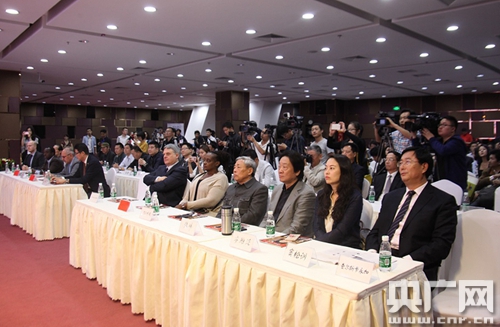Direct Access To The Indian Ocean To Break The Dependence On Malacca, China Must Open The China-Myanmar Economic Corridor
Direct Access To The Indian Ocean To Break The Dependence On Malacca, China Must Open The China-Myanmar Economic Corridor
In order to break its dependence on the Strait of Malacca, China is looking for ways to build the China-Pakistan Economic Corridor, the China-Myanmar Economic Corridor, the China-Europe Railway Express, and the Northern Route.
Currently, most of China's shipping supplies pass through the Strait of Malacca. According to relevant statistics, 28% of the world's ships will pass through the Strait of Malacca in 2024, and more than 80% of China's energy imports rely on this strait for transportation. In order to break its dependence on the Strait of Malacca, China is looking for ways to build the China-Pakistan Economic Corridor, the China-Myanmar Economic Corridor, the China-Europe Railway Express, and the Northern Route.
But taken together, the one with the greatest potential and greatest value is the China-Myanmar Economic Corridor. The China-Pakistan Economic Corridor connects Xinjiang and Pakistan and can quickly transport materials to China's northwest. However, it is too far away from China's economic core and there is no water transportation, so the transportation cost is the highest. China-Europe freight trains are transported by land all the way, passing through many countries, full of uncertainties, and particularly high freight costs; the northern route, although relatively short in mileage, is only suitable for trade between China and Europe, and along the way it is vast, sparsely populated, covered by glaciers, and relatively difficult to supply.

The China-Myanmar Economic Corridor connects southwest China on one side and the Indian Ocean on the other. It can shorten the distance from southwest China to the Indian Ocean by about 5,000-6,000 kilometers, saving 7-10 days. Moreover, entering the Southwest means directly entering the economic hinterland of China, which is of great significance. From the southwestern region to the Pearl River Delta, Yangtze River Delta, Central China and other regions, there are golden waterways such as the Yangtze River and Pearl River. Materials coming from the Indian Ocean can be directly shipped in Yunnan and shipped to all parts of the country, with low transportation costs.
Not only that, the China-Myanmar Economic Corridor can also develop shipping. There are international rivers such as the Nu River (Salween River) and the Irrawaddy River between China and Myanmar, and the rivers contain a large amount of water. Among them, the Irrawaddy River is the largest river in Myanmar, with an annual runoff of 486 billion cubic meters, which is larger than the Pearl River in China and about half of the Yangtze River. In ancient times, the Irrawaddy River was the golden water corridor from Yunnan to the Indian Ocean. "Wei Lue·Xirong Biography" records that the water channel of Da Qin State leads to Yongchang County in Yizhou.

If the channel of the Irrawaddy River is reorganized, a golden waterway can be formed. Theoretically speaking, "Bamo-Yangon" can pass 5,000-ton ships. At present, 1,730 kilometers of the Irrawaddy River are navigable and can handle ships of 2,000 tons. If rectification is carried out, the Irrawaddy River can be navigable to the Yunnan border.

The Salween River in the lower reaches of the Nu River is the second largest international river in Southeast Asia. It originates from the Qinghai-Tibet Plateau in China. Its current annual runoff is 486 billion cubic meters, which is comparable to the Salween River. However, the areas where the Nu River flows are mainly plateau and mountainous areas with poor navigation capabilities. Currently, 1,000-ton ships can pass downstream. If cascade large-scale hydropower stations are built on the Nu River and multiple ship locks are built, ships can be allowed to reach the hinterland of Yunnan directly from the coast of Myanmar.

Once China's railway and waterway transportation to the Indian Ocean are opened, China's southwest region will become a bridgehead to the Indian Ocean from its rear area. The southwest region mainly refers to the three provinces and one city of Sichuan, Chongqing, Guizhou, and Yunnan, with a population of 200 million and a total economic volume of approximately 15 trillion yuan. The southwest region is the region with the greatest economic potential in China. In the future, its economic strength will be ranked third in the country after the Yangtze River Delta and Lingnan regions in China's economic map.
The southwest region has great potential for economic development, but the natural environment also has great constraints on the economy. First of all, the terrain in the southwest is very rugged. Except for the Sichuan Basin, there are no decent plains in the southwest. Most of the areas are crisscrossed with ravines and mountain peaks, which seriously hinders transportation and urban construction. Secondly, there is no coast in the southwest, and the only way to go to sea is through the Beibu Gulf and the Yangtze River Channel, which are very long distances.

If we look westward, we see that the southwest is not far from the Indian Ocean. Starting from the border line of Yunnan, it is only more than 600 kilometers away from the Indian Ocean. If the route from Yunnan and Myanmar to the sea can be opened, then ships from the entire southwest region to the Indian Ocean, the Middle East, Africa, and Europe will not have to detour through the Yangtze River Delta and the Pearl River Delta, which will save transportation time and reduce transportation costs, and the economy will achieve further development.
However, the construction of the China-Myanmar Economic Corridor is very tortuous. As early as the Anti-Japanese War, the Republic of China government began to use 300,000 people to build the Yunnan-Burma Railway, but in the end only a small section from Kunming to Anning was built, and later it was completely demolished. Planning for the new China-Myanmar Railway started in 2006, and a Memorandum of Understanding on the Muse-Kyaukpyu Railway was signed with Myanmar in 2011. However, implementation was delayed in 2014 due to opposition from the Myanmar people. So far, construction of this railway has not started.

After World War II, Myanmar gained independence, but the domestic situation was very turbulent and its economic development seriously lagged behind, making it one of the last countries in the world. Due to its backward economy, Myanmar has little demand for shipping, so it has not vigorously developed the hydropower resources of the Salween River or constructed waterways between the two rivers. Although China has the funds and capabilities to develop waterways, Myanmar's downstream waterways are not smooth, so it does not make much sense for China to develop upstream.
Secondly, the border area between China and Myanmar is also one of the most unstable geopolitical areas in Southeast Asia. There are many warlords here, and the Myanmar government has no control over it. The Wa army here often goes to war with the Myanmar army, causing instability in the region and making it difficult for the economy to develop. The warlords in northern Myanmar also wantonly develop cancer industries such as drug cultivation, weapons smuggling, and telecommunications fraud, which not only pose a huge threat to Southeast Asia, but also cause huge harm to the Chinese people.
In addition, Myanmar has not wanted to get too close to China since its founding. It has repeatedly wanted to get closer to the United States in an attempt to use the power of the United States to balance China. This has made it difficult for Chinese capital to flow into Myanmar on a large scale, and Myanmar's construction has been difficult to sustain.
But if you think about it carefully, Myanmar’s geographical location is also excellent in Southeast Asia. Myanmar not only guards China's southwest region's major sea channel, but also serves as an economic channel between China and India. China is Asia's largest economy and India is Asia's second largest economy. In the future, China and India will both be the world's leading economic powers. The best route for economic connections between China and India is through Myanmar. Myanmar is between China and India. As long as we seize the opportunity, we can make a lot of money in tolls.

Looking at the four major international rivers in Southeast Asia, three of them are related to Myanmar. Most of the Irrawaddy River is in Myanmar, the entire lower reaches of the Nu River are in Myanmar, and a section of the Mekong River also passes through the border of Myanmar and becomes a boundary river. If Myanmar can make full use of the shipping advantages of these rivers, it will inevitably become an inland waterway shipping hub in Southeast Asia and a new logistics evacuation base.
However, due to various reasons, Myanmar cannot take advantage of these conditions. Myanmar today is one of the most backward countries in the world. After the China-Myanmar Railway was proposed, the Myanmar people turned out to be violently opposed. It is no wonder that Myanmar’s economy cannot develop.

Currently, only two oil and gas pipelines have been built under the China-Myanmar Economic Corridor. The oil and gas pipeline reaches Ruili, Yunnan in the east and Kyaukpyu Port in Myanmar in the west. The pipeline allows crude oil transportation to bypass the Strait of Malacca and builds a direct pipeline in the Indian Ocean to shorten the transportation distance by 1,820 nautical miles. Construction started in 2010 and has now been put into operation. As of August 2024, the total volume of oil and gas transported has exceeded 100 million tons.
It can be seen that just oil and gas pipelines are of extraordinary significance to China. In the future, China must strengthen economic cooperation with Myanmar, open up corridors in railways, water transportation, electricity, etc., and achieve strategic breakthroughs and large-scale layout. This move will not only benefit China's great rejuvenation, but also benefit the economic development of Southeast Asian countries.






